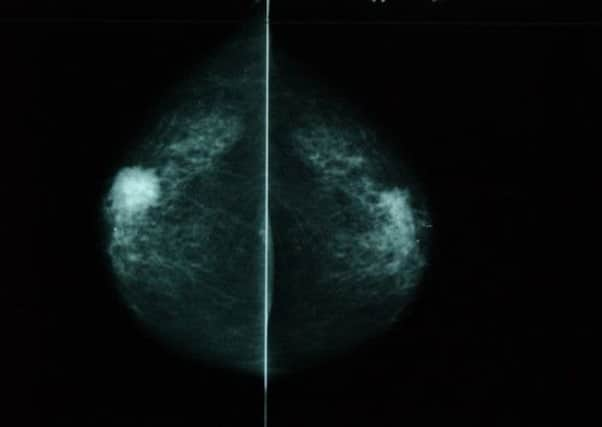Breast cancer action call as £6m drug brought in


NHS boards failed to meet a two-month target from referral to treatment for seven out of ten cancer types, official figures yesterday showed.
Some 95 per cent of patients in Scotland should be seen inside 62 days in line with national targets, but this was as low as 89.3 per cent for cervical cancer types and 90.6 per cent for lymphoma.
Advertisement
Hide AdAdvertisement
Hide AdEight of Scotland’s 14 regional health boards failed to meet the target in January to March this year, with just 83.3 per cent of patients starting their treatment within two months of being urgently referred in Orkney.
Of all the mainland health boards, NHS Highland performed the worst, with 90.2 per cent of cancer patients starting treatment within the 62-day target time, compared to 98.6 per cent in the Borders.
The target was also missed across all cancers in Scotland as it fell to 94.4 per cent.
Liberal Democrat health spokesman Jim Hume said: “This is a depressing picture for patients awaiting cancer treatment.
“It is clear that the gulf in cancer treatment times is continuing to widen. Last quarter, we saw that the 62-day standard was not met for four out of ten cancer types. However this quarter the 62-day waiting time standard was not met for seven out of ten cancer types.”
The 89.3 per cent figure for cervical cancer compares with 98 per cent of breast cancer patients who met the two-month target.
“We need a clearer picture as to why patients with some cancer types are being treated more quickly than patients with other cancer types,” Mr Hume added.
Labour health spokeswoman Jackie Baillie called on the Scottish Government to lower the waiting times to two weeks from initial test to diagnosis to lessen the stress on patients.
Advertisement
Hide AdAdvertisement
Hide Ad“It’s not acceptable that we have staff vacancies unfilled, no access to CT scans or MRIs and capacity issues not being addressed,” Ms Baillie added.
“Early detection is critical to reducing the grip cancer has on society.”
But the Scottish Government insists there has been a long-term improvement in cancer waiting times.
“People are being treated faster than ever and living longer as a result,” a spokeswoman said.
“In this last quarter, 94.4 per cent of those urgently referred started treatment within 62 days. Although this is against a target of 95 per cent, over half of these patients started treatment within only 37 days.”
The government is investing £30 million over three years in a Detect Cancer Early programme to help improve survival rates to among the best in Europe. Faster treatment will also be made available through £12.3m of funding released to NHS boards this year.
£6m to be invested in tamoxifen
AROUND £6 million is set to be invested in a drug to help 50,000 Scottish women at a high risk of breast cancer to radically reduce their chances of developing the disease.
The preventative treatment, tamoxifen, will be made available to those women whose family has a history of the illness, the Scottish Government has announced.
Advertisement
Hide AdAdvertisement
Hide AdRecent studies have found that taking the drug can reduce the risk of developing the disease by up to 50 per cent, meaning affected woman will have a choice other than a mastectomy.
Women who have two or more breast cancer sufferers in their family are to be offered the treatment for five years, officials have said.
Drink and drug targets are met
Targets for drug and alcohol treatment waiting times have been met, according to official figures.
Between January and March this year, 94.6 per cent of the 10,897 people who started their first drug or alcohol treatment had waited three weeks or less.
The government set a target that by March 2013, 90 per cent of people who need help with their drug or alcohol problem would wait no longer than three weeks for treatment.
Of the 2,832 people who were still waiting to start drug or alcohol treatment, 73 people, or 2.6 per cent, had waited more than six weeks at the end of March 2013, compared to 121 people, or 4.5 per cent in the previous quarter.